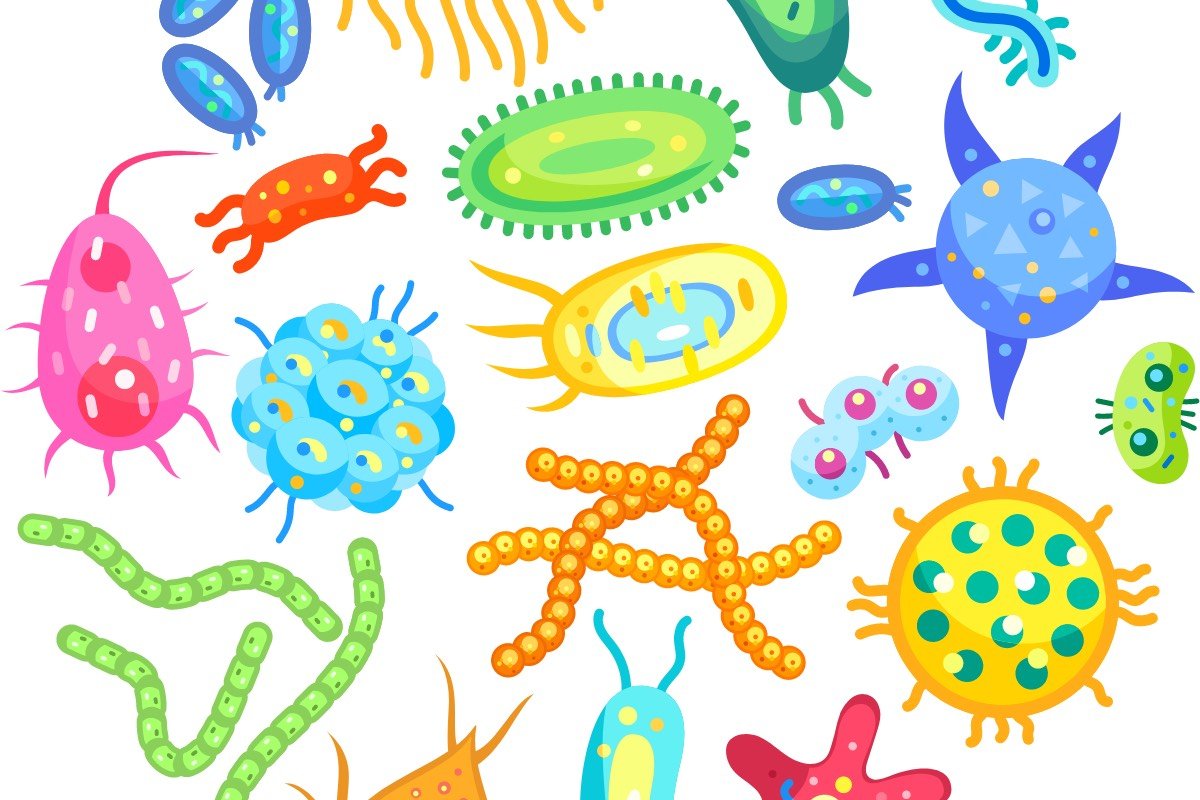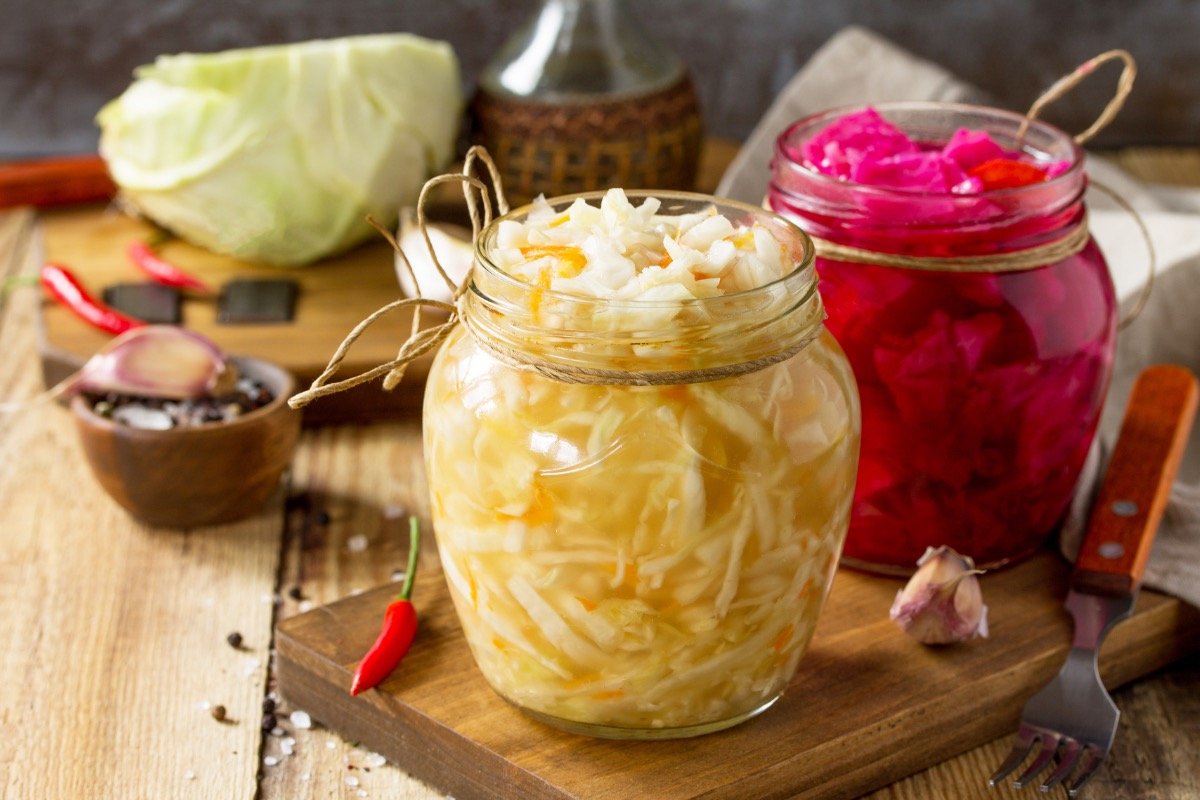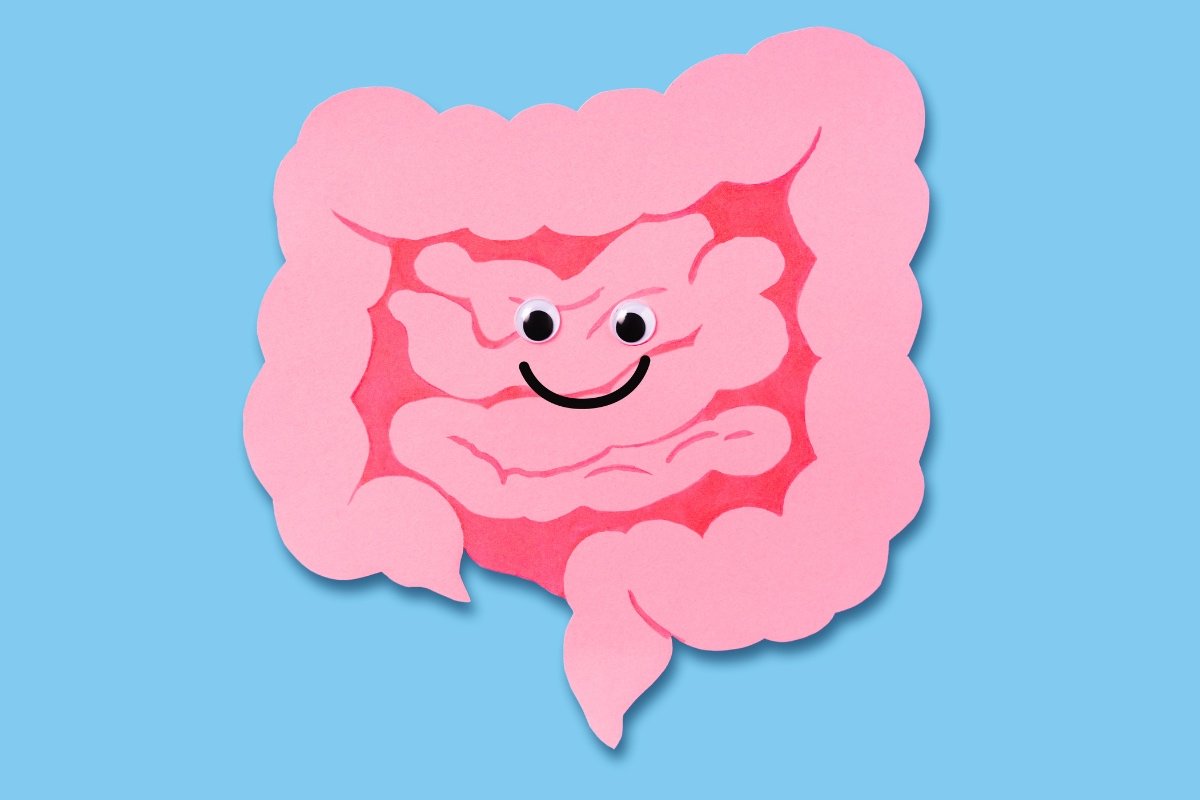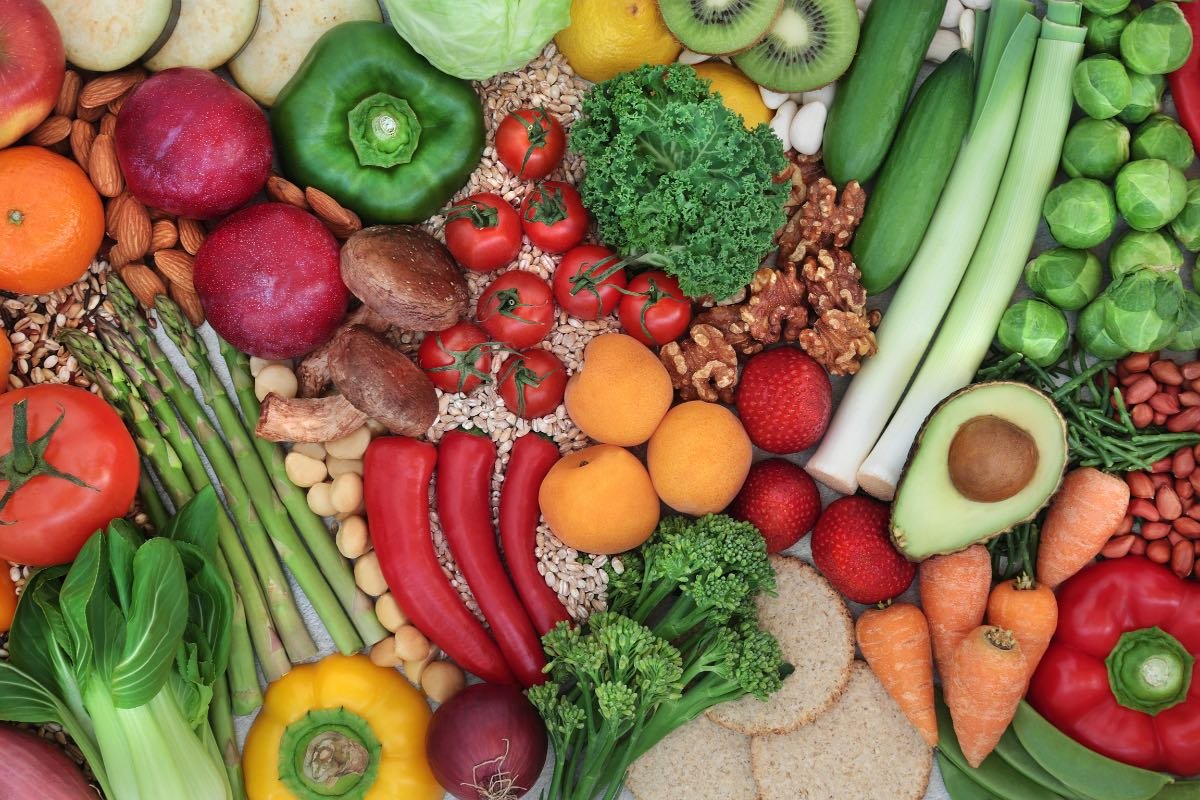Probiotic Foods For Kids: What Parents Need To Know
Your child’s gut health impacts every aspect of their health, from their immune function to their mood and behaviour and even their risk of chronic diseases later in life.
Probiotic foods - foods that contain beneficial bacteria - can be an effective way to support a healthy gut.
But with so much conflicting advice online, it’s hard to know what’s actually effective.
In this post, we’ll break down science-backed probiotic foods for kids, what to look for, and how to include them in your child’s meals and snacks.
Why gut health matters in childhood
Your child’s gut health plays a critical role in their overall health, impacting many aspects of their body’s functions, including:
Digestive health
Immune function
Mood and behaviour
Nutrient absorption
Risk of chronic disease
Risk of developing allergies
The gut microbiome changes throughout our lives, but after the age of 3, a child’s gut microbiome starts to resemble that of an adult and becomes more fixed.
That’s why establishing good gut health in kids, as early as possible, is so important in setting them up for long-term good health.
What exactly is the gut microbiome?
The ‘gut microbiome’ (the bacteria that live in the gut) is what determines our gut health.
The gut microbiome is made up of trillions of microorganisms called microbiota or microbes.
Each individual has a different makeup of microbes in their gut. Our DNA determines our gut microbiome to begin with, and it’s then influenced by other factors such as diet.
Some of the microbes in our gut are helpful and some can potentially be harmful.
In a healthy body, having some potentially harmful (pathogenic) microbes doesn’t cause problems.
But certain factors can upset the balance of microbes, such as illness, poor diet or prolonged use of antibiotics. This can lead to an overpopulation of pathogenic microbes, which can mean we’re more susceptible to disease.
What do probiotics have to do with it?
Probiotics are defined as ‘live microorganisms that, when administered in adequate amounts, confer benefit to the host’.
They can come from foods or supplements.
Probiotics have been shown in some studies to reduce gastrointestinal and respiratory infections, improve digestion and reduce inflammation.
But despite the hype, the extent to which they can positively impact our health isn’t quite known yet.
What are probiotic foods?
Probiotic foods contain live, beneficial bacteria that can support gut health when consumed in adequate amounts.
Probiotics are naturally found in certain foods that have undergone controlled fermentation. However, not all fermented foods contain probiotics.
In order be classified as a probiotic food, the probiotics contained in that food need to be safe, characterised (the strain is identified and named using genus and species), supported by a clinical trial demonstrating their effectiveness and provided in a sufficient dose to stay alive as the food passes through the digestive tract.
How to tell if a food is a ‘probiotic food’
This is where it can get a little tricky. Foods are often marketed as probiotic foods, but don’t meet these criteria.
So basically, you’re not really sure if you’re getting any probiotics or enough to actually offer any benefit.
Probiotics are measured in what’s called ‘colony forming units’ (CFUs), which indicate the number of viable cells.
The best way to check whether a fermented food is classified as a probiotic food is to look for CFUs listed on the nutrition information panel.
Fermented foods vs probiotic foods
Fermented foods such as sauerkraut, kimchi and kefir are often described as being probiotic foods.
But, although fermented foods contain live cultures, or have at some point, they can’t automatically be classified as probiotic foods unless they meet the criteria outlined above.
Any fermented food that has been heat-treated won’t contain live cultures anymore, so it can’t be classified as a probiotic food.
The best probiotic foods for kids
So, with all that in mind, what are some go-to probiotic foods for kids?
1. Yogurt with live cultures
I find the easiest and most acceptable probiotic food for most kids is yogurt - just make sure you choose one that says it contains ‘live cultures’ on the label.
Ideally, go for an unsweetened yogurt and add some fruit for flavour (or go for the lowest sugar-flavoured yogurt you can find).
If your child doesn’t like yogurt on its own, try adding a little bit to a smoothie so the flavour isn’t obvious.
Dairy-free yogurts such as coconut yogurt do sometimes have live cultures added to them, but make sure you check for CFUs listed on the nutrition information panel to determine if it meets the criteria of a ‘probiotic food’.
Look for a yogurt with 1 billion or more probiotics per serve (1 x 10(9) CFUs).
2. Probiotic drinks
Probiotic drinks such as Yakult are a convenient and kid-friendly way to support gut health, especially for children who may be hesitant to eat fermented foods.
They can make a convenient snack or lunchbox addition.
If kids aren’t keen on plain varieties, there are fruit-flavored options available too.
One down side of these drinks is that they can be fairly high in sugar, so look for the lowest sugar options.
3. Kefir
A drinkable fermented milk product that generally contains more strains of probiotics than yogurt.
It has a tangy, slightly fizzy taste so you might not get it across the line as a drink on its own, but it can easily be added to smoothies or offered as a yogurt alternative.
Once again, check for CFUs listed on the nutrition information panel to determine if a particular kefir meets the criteria of probiotic food.
Foods that may contain probiotics
Below are some fermented foods that may not meet the definition of a ‘probiotic food’ but can still contain some beneficial microbes.
Just be warned - some of these are a pretty hard sell for kids (fermented cabbage anyone?) but you never know until you try right?
Sauerkraut
Shredded cabbage fermented in brine, which can be mixed into meat and vegetable dishes or served as a condiment for more adventurous kids!
Go for raw or unpasteurised sauerkraut as pasteurised versions will have lost much of their bacteria during processing.
Kimchi
Kimchi is a traditional Korean fermented vegetable dish - usually made with cabbage and radish - that can be a natural source of probiotics when unpasteurized.
Its tangy flavor and crunchy texture may appeal to older kids and, like sauerkraut, it can be added into meat and vegetable dishes.
Miso
A paste made from fermented soybeans, salt and rice or barley, which is often used in Japanese cuisine.
Miso can be consumed as a soup, made into a sauce or used as a marinade on meat, tofu and vegetables. However, remember that cooking miso, or any other fermented foods, will kill off the beneficial bacteria.
Miso is suitable for older kids in small quantities due to its salt content.
If you do decide to include these foods in your child’s diet, start gradually to allow their gut to adjust.
How to include probiotic foods in your child’s diet
Start slow
Introduce one food at a time to gauge your child’s reaction and preference.
Make it familiar
Mix new probiotic foods with familiar and well-liked meals.
For example, stir kefir into porridge or blend it into a smoothie.
Rotate options
A variety of probiotic strains is ideal, so rotate options if possible - for example, alternate between yogurt and kefir throughout the week.
Frequently Asked Questions
Can I give my child probiotic supplements instead?
You can, but food-based sources are often safer, more enjoyable, and contain additional nutrients.
Supplements may be helpful if your child has gut-related conditions — speak to a healthcare provider first.
How often should kids eat probiotic foods?
Aim for 1–2 servings of probiotic-rich foods per day for general gut health.
Do probiotic foods help with picky eating?
While probiotics won’t cure picky eating (sorry!), supporting gut health can positively influence appetite, digestion, and even mood — all of which can help ease mealtime stress.
Related Article: 10 Tips for Coping with a Picky Eater
What else can you do to support your child’s gut health?
The role of diet in gut health
Many factors influence the makeup of our gut microbiome, including our genetics. But research has consistently found that diet is one of the main factors.
Dietary components such as fiber, vitamins, minerals, specific fatty acids and phytochemicals (biologically active compounds found in plants) have also been found to cause changes in the microbiome.
This is because different foods affect our gut bacteria and the gut itself differently.
The typical Western diet, which is high in animal proteins, sugar, processed foods and saturated fat, results in less-diverse gut bacteria and promotes inflammation, which can increase our risk of health issues and chronic disease.
Fibre and gut health for kids
When it comes to what we eat, dietary fiber appears to be the most significant influencer of the gut microbiome.
The foods we eat affect the diversity and composition of microbiota in the gut - those gut bugs are healthiest when their hosts (that’s us) consume plant foods that are high in fiber.
Fibre is only found in plant foods and is the part of a food that isn’t digested in the small intestine.
This means that it moves into our large intestine, where most of our gut bacteria live.
When these bacteria digest fiber they produce short-chain fatty acids that nourish the gut barrier, which in turn improves immune function and reduces inflammation, helping to protect against chronic disease later in life.
The more fiber we eat, the more fiber-digesting bacteria colonise the gut.
Good sources of fibre
Fruit and vegetables - fresh, frozen or tinned
Wholegrain bread - wholemeal, multigrain made with wholemeal, or high-fiber white bread
Wholegrain breakfast cereals such as oats, muesli, Weetbix and Weeties or other whole-wheat cereal
Wholegrain crackers
Nuts and seeds
Legumes such as chickpeas (and hummus), lentils and beans
Brown rice and wholemeal or legume-based pasta
Unfortunately, kids are often not so fond of fiber-rich foods.
Many kids prefer white bread over wholemeal, barely touch their veggies and wouldn’t dream of eating brown rice or legumes, which can make achieving a gut-loving diet a little tricky.
If this is your child, don’t despair!
Easy swaps to make increasing your child’s fibre intake a little easier
Switch to wholemeal bread, or high-fiber white bread if your child won’t eat wholemeal
Try smoothies for snacks with plenty of fruit such as bananas, berries or mango, some veg such as spinach (if your child isn’t opposed to green foods!), milk and yogurt
Leave skin on fruit and vegetables where possible - such as apples, potatoes, carrots and sweet potatoes
Add a tin of lentils to bolognese sauce
Add some hummus to a wrap or serve it with crackers or veggie sticks as a snack
When baking, swap half the plain flour for wholemeal flour
Add a small amount of seeds such as chia seeds or hemp seeds to porridge or homemade muffins
But….
As with all good things, there is such a thing as too much fiber, especially for young children. Because high-fiber foods are typically very filling, there may be insufficient room left in little tummies for other important nutrients and adequate calories.
For this reason, a moderate fibre intake is recommended for children under 2 and providing a mix of white and wholegrain foods is a good idea.
It’s also important that kids drink plenty of water, as increasing fiber without increasing water can lead to constipation.
Why variety is key
Research into gut health has found that a diverse gut microbiome is a healthy one.
That means, it’s good to have lots of different types of microbes living in our gut.
Different species of bacteria prefer different types of food, so by eating a wide variety of foods, we’ve got a better chance of keeping all these species happy and maintaining a diverse range of microbiota in the gut.
This is one of the reasons that ‘eating the rainbow’ is so important.
Including a wide variety of foods - particularly plant-based foods - in your child’s diet not only helps to keep their gut microbiome happy but also helps to ensure they’re getting the nutrients they need.
Prebiotics
While they sound very similar, prebiotics and probiotics play very different roles when it comes to gut health.
Prebiotics are substances that pass through the gastrointestinal tract undigested and then feed the beneficial bacteria in our large intestine.
This stimulates the growth of these bacteria, allowing them to thrive.
Foods that act as prebiotics include:
Oats
Resistant starch found in cooked and cooled potato, rice and pasta
Onions
Garlic
Legumes
Unripe bananas
Asparagus
Apples
My top tips for good gut health in kids
Offer plenty of fiber-rich foods
Including plenty of fiber in your child’s diet is really important for gut health - which ideally means plenty of wholegrain breads and cereals, fruit and veg, nuts, seeds and legumes, but even if all you can do is switch to a high fiber white bread, it’s a great start!
Just make sure that you don’t overdo it, as there is such a thing as too much fiber, especially for kids.
Eat the rainbow
Diversity is one of the keys to good gut health, so try to include a wide variety of whole, plant-based foods in your child’s diet, including whole grains, fruits, vegetables and lean proteins.
Add some good bacteria
Probiotic foods provide a natural source of probiotics.
Yogurt with live cultures is a great place to start and is generally accepted by most kids. If you need a dairy-free option, try a plant-based yoghurt with live cultures.
See the above ‘probiotic foods for kids’ section for information on how to identify a probiotic food.
Feed the good bacteria
Include prebiotic foods to feed beneficial bacteria such as oats, legumes, onions, garlic, asparagus and cooked and cooled pasta, rice and potato.
Plenty of water
Adequate hydration is essential for good digestion in kids and is part of creating the ideal environment for a healthy gut microbiome.
Water and milk are the best drinks for children.
Plenty of exercise
The amount of physical activity kids get can affect their gut microbiome.
Recent studies suggest that exercise can increase the number of beneficial microbes and microbial diversity.
Adequate sleep
Sleep plays a crucial role in the mental and physical development of children and is also closely associated with gut health, with sleep quality being found to be positively associated with microbial diversity.
So - while I know it’s easier said than done - try to ensure your child is getting the sleep they need.
Overall, a balanced diet with plenty of fiber, adequate hydration, sleep and exercise is key to optimal gut health in children.
Adding in some probiotic foods can be a great way to boost the beneficial bacteria in your child’s gut.
But make sure you consult a pediatric dietitian or your child’s doctor if you’re concerned about their gut health or any other aspects of their health, or before making any significant changes to their diet or lifestyle.














